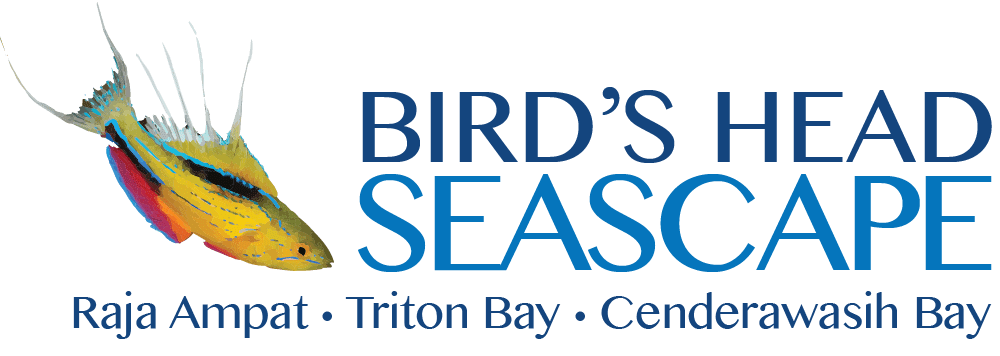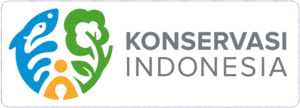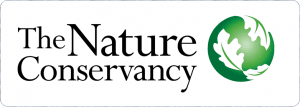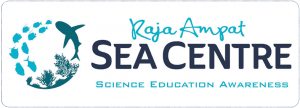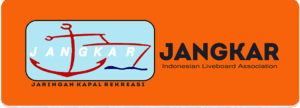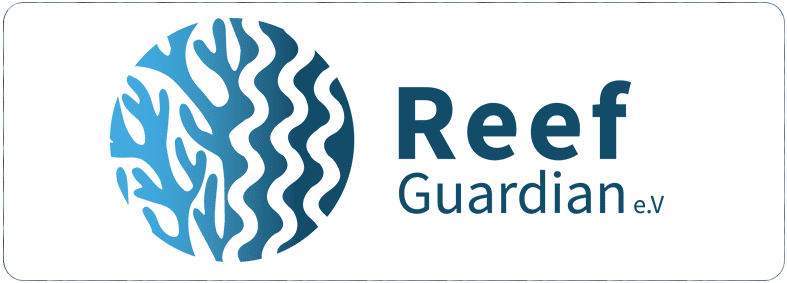Library / Fact Sheets
Explore PDFs and information about current and past research topics. Study all of the research data from the region.
<< RETURN TO LIBRARY INDEX
| Name | Size | Hits |
|---|---|---|
 Raja Ampat MPA Network Fact Sheet 2012 Raja Ampat MPA Network Fact Sheet 2012 |
1393365747 Author(s): Conservation International Tags: Raja Ampat, conservation, Bird's Head Seascape, MPA Network Description: The Raja Ampat Islands are located off the northwesterntip of West Papua Province, Indonesia, in the heart ofthe Coral Triangle – the global center of marine biodiversity. Raja Ampat is the undisputed heart oftropical marine diversity. 0.5 MiB |
2386 |
 BHS Fact Sheet 2006 BHS Fact Sheet 2006 |
1393625589 Author(s): Conservation International Tags: Biodiversity, Bird's Head Seascape, MPA Network, Food Security Description: The Bird’s Head Seascape sits at the epicenter of the so-called “Coral Triangle” region. It is located in northwest Papua, Indonesia, stretching from Teluk Cenderawasih in its eastern reaches to the Raja Ampat archipelago in the west and the FakFak-Kaimana coastline to the south. Covering a combined area of over 180,000 km² and more than 2500 islands and submerged reefs, the Seascape is home to over 1,200 species of coral reef fishes and nearly 600 species of scleractinian hard coral (approximately 75 percent of the world’s total)—the highest coral reef biodiversity recorded for an area of this size anywhere in the world. 0.3 MiB |
1516 |
 BHS Fact Sheet 2009 BHS Fact Sheet 2009 |
1393625818 Author(s): Conservation International Tags: conservation, Biodiversity, Bird's Head Seascape, MPA Network, Food Security Description: The Birds Head Seascape sits at the epicenter of the „Coral Triangle‟ region. It is located in northwest Papua, Indonesia, stretching from Teluk Cenderawasih in its eastern reaches to the Raja Ampat archipelago in the west and the FakFak-Kaimana coastline to the south. Two recent biological surveys highlighted not only the amazing diversity of marine habitats and species in the Seascape, but also how little we know about these underwater life forms. 1.8 MiB |
1303 |
 BHS Fact Sheet 2010 BHS Fact Sheet 2010 |
1393626042 Author(s): Conservation International Tags: conservation, Biodiversity, Bird's Head Seascape, MPA Network, Food Security Description: Since 2004, Conservation International (CI) has led the Bird’s Head Seascape (BHS) marine conservation initiative, which is located off of northwestern Papua, Indonesia in the heart of the Coral Triangle. This initiative has focused on preserving 183,000 km2 of the world’s most biodiverse coral reefs and associated habitats by directly linking conservation strategies to the well-being of the seascape’s inhabitants. The centerpiece of the initiative is a network of 10 multiple-use marine protected areas (MPAs) that together comprise over 3.5 million hectares and have been designed to provide long-term food security and other livelihood benefits for the Papuan communities that own the nearly 2,500 islands and reefs in the BHS. 1.6 MiB |
1180 |
 Codes of Conduct for Divers and Dive Operators in the Bird's Head Seascape Codes of Conduct for Divers and Dive Operators in the Bird's Head Seascape |
1393742778 Author(s): Bird's Head Seascape Tags: Description: Codes of Conduct for Divers and Dive Operators in the Bird's Head Seascape 0.3 MiB |
1613 |
 BHS Fact Sheet 2008 BHS Fact Sheet 2008 |
1394650171 Author(s): Conservation International Tags: conservation, Biodiversity, Bird's Head Seascape, MPA Network, Food Security Description: A New Future for Marine Conservation: Papuan Bird’s Head Seascape. The Bird’s Head Seascape sits at the epicenter of the ‘Coral Triangle’ region. It is located in northwest Papua, Indonesia, stretching from Teluk Cenderawasih in its eastern reaches to the Raja Ampat archipelago in the west and the FakFak- Kaimana coastline to the south. Two recent biological surveys highlighted not only the amazing diversity of marine habitats and species in the Seascape, but also how little we know about these underwater life forms. The surveys uncovered as many as 56 new species of fish, coral and mantis shrimp in less than 6 weeks! Perhaps even more stunning for a Seascape of this relatively small size, up to 50 of the new species appear to be endemic to the Bird’s Head Seascape—found no where else in the world. 0.8 MiB |
1074 |
 BHS Fact Sheet 2011 BHS Fact Sheet 2011 |
1394650541 Author(s): Conservation International Tags: conservation, Biodiversity, Bird's Head Seascape, MPA Network, Food Security Description: The Bird’s Head Seascape (BHS) sits in the global epicentre of marine biodiversity—in the Coral Triangle, in northwest Papua Barat, Indonesia. With over 1,600 recorded species of coral reef fishes and more than 600 species of hard coral, the BHS has the highest coral reef diversity recorded for an area of its size anywhere in the world.A guiding principle of the BHS initiative has always been that biodiversity conservation and human well-being must go hand-unhand in order to succeed. At the center of this ambitious initiative is the establishment and implementation of a multiple-use network of marine protected areas (MPAs) that is supported by and embedded in local and national legislation and co-managed by local communities and local government agencies. 2.9 MiB |
1189 |
 BHS Fact Sheet 2012 BHS Fact Sheet 2012 |
1394650751 Author(s): TNC; CI; WWF-Indonesia Tags: conservation, Biodiversity, Bird's Head Seascape, MPA Network, Food Security Description: The Bird’s Head Seascape (BHS) located in northwest Papua in Indonesia, stretches from Cenderawasih Bay in its eastern reaches to the Raja Ampat archipelago in the west and the Fakfak-Kaimana coastline in the south, sitting firmly in the global epicenter of marine biodiversity. These reefs and mangrove forests are the life support system for the people of the BHS. They provide food, jobs, and protection from storms and rising seas for more than 761,000 people. Sadly, these vital resources are under threat. Thanks to strong partnerships, engaged local governments and communities, more than 3.5 million hectares spanning 12 Marine Protected Areas (MPA) across the BHS is now protected. But to secure the health of these vital resources for the people of the BHS, there is still much more to do. 0.4 MiB |
1038 |
 Kalabia Conservation Education Fact Sheet 2010 Kalabia Conservation Education Fact Sheet 2010 |
1394651117 Author(s): Conservation International Tags: Raja Ampat, Kalabia, marine conservation education Description: In 2004, Conservation International (CI) began a major marine conservation initiative, working with partners to safeguard Raja Ampat’s globally significant biodiversity and ensure that local communities derive sustainable livelihoods from their rich marine resources. One of the major problems is that young fishers are generally more skeptical of the need for marine conservation efforts and are most likely to engage in high-yield, yet destructive, fishing practices such as bomb and cyanide fishing. To tackle this problem, CI and our partner The Nature Conservancy (TNC) launched a comprehensive marine conservation education program for school children and young adults in the 103 villages of Raja Ampat. Given the remoteness of these villages, we employed an innovative platform for delivery of this education program—a 34-meter converted tuna long-liner vessel, the MV Kalabia – that visits each of the villages in turn for three days and serves as a -floating education center. 0.3 MiB |
1333 |
 Kofiau MPA Fact Sheet 2012 Kofiau MPA Fact Sheet 2012 |
1394651302 Author(s): The Nature Conservancy Tags: conservation, MPA, Fisheries, Kofiau, Boo Islands Description: Kofiau and Boo Islands Marine Protected Area (MPA) in southern Raja Ampat, encompasses 170,000 hectares of islands, coastal and marine waters, and harbors a wide diversity of marine habitats and reefs types. The MPA rests within the Coral Triangle – the global center of marine biodiversity – and is an important area for cetaceans – including pilot whales and orcas – who visit the area each year. 0.5 MiB |
2027 |
 Marine Conservation Agreements Fact Sheet 2012 Marine Conservation Agreements Fact Sheet 2012 |
1394651418 Author(s): The Nature Conservancy Tags: Fisheries, sustainable management, Marine Conservation Agreements, resource owner Description: Local resource owners, managers and users are using Marine Conservation Agreements (MCAs) to sustainably manage their marine resources and to ensure these resources benefit the lives of coastal and island peoples. While government mandated protected areas do offer some protection, they alone cannot ensure that many of Indonesia’s remote regions are protected. MCAs empower local people to conserve local systems, help to improve marine protection, and deliver tangible benefits like food and income to the people who depend on them for their survival. 0.2 MiB |
1127 |
 MPA Capacity Building Fact Sheet 2012 MPA Capacity Building Fact Sheet 2012 |
1394651555 Author(s): Local resource owners, managers Tags: Bird's Head Seascape, MPA Management Capacity Building, training Description: The Papuan Bird’s Head Seascape (BHS), in eastern Indonesia, contains a network of 12 ecologically connected Marine Protected Areas (MPAs), covering a total area of over 3.6 million ha. Remarkably, the majority of these MPAs were declared and are being co-managed through partnerships between local communities and local and national government agencies. This local management is a hallmark of the BHS initiative and is only possible with empowered communities, engaged policymakers, and well-trained Papuan MPA managers. 1.8 MiB |
1481 |
 SE Misool Fact Sheet 2012 SE Misool Fact Sheet 2012 |
1394651717 Author(s): The Nature Conservancy Tags: conservation, diving, MPA, Fisheries, Southeast Misool Description: Southeast Misool is the largest and southern most marine protected area (MPA) in the Raja Ampat MPA network and rests within the Coral Triangle – the global center of marine biodiversity. The MPA encompasses 366,000 hectares, spanning a long chain of ancient karst limestone islands with a mosaic of channels and intact marine lakes. 0.4 MiB |
2225 |
 Summary Of Procedure For Liveaboards Visiting Cendrawasih Whale Sharks Summary Of Procedure For Liveaboards Visiting Cendrawasih Whale Sharks |
1401428552 Author(s): Dr. Mark Erdmann and Maurine Shimlock Tags: Cenderawasih Bay, tourism, whale sharks, liveaboards, foreign vessels and procedures Description: Summary of Procedures for Vessels Visiting Cenderawasih Bay National Park: How to View Whale Sharks and Dive Additional Sites IMPORTANT: THE SITUATION IN CENDERAWASIH BAY IS IN CONSTANT FLUX. WHILE EVERY ATTEMPT HAS BEEN MADE TO KEEP THESE PROCEDURES UP TO DATE, PLEASE CHECK IN WITH PARK OFFICIALS TO DETERMINE THE MOST CURRENT PROCEDURES. RELY ON YOUR RANGER AND BE PATIENT WHEN ASKING PERMISSION TO DIVE NEAR VILLAGES 49 KiB |
1760 |
 Ecosystem-based Management of the Bird's Head Seascape Ecosystem-based Management of the Bird's Head Seascape |
1401466029 Author(s): BHS EBM Program Tags: Bird's Head Seascape, Ecosystem Based Management, Factsheets, Packard Foundation Description: The future prosperity of the people living in the Bird’s Head Seascape (and their grandchildren) urgently depends upon responsible, well-informed policies that allow for sustainable development while preventing the environmental destruction that has occurred in many other areas of Indonesia. 2.7 MiB |
2327 |
 Seascapes Newsletter 2007 Issue 1 Seascapes Newsletter 2007 Issue 1 |
1401466717 Author(s): CI Seascapes Program Tags: Bird's Head Seascape, Sasi, Genetic Connectivity, Ferdiel Ballamu, Papua Sea Turtle Foundation Description: Several short articles relating to the BHS including sea turtles, genetic connectivity, and eco-system based management. 0.8 MiB |
1455 |
 Seascapes Newsletter 2007 Issue 2 Seascapes Newsletter 2007 Issue 2 |
1401659427 Author(s): CI Seascapes Program Tags: Bird's Head Seascape, walking shark Description: Information about the Raja Ampat walking shark and the declaration of Raja Ampat MPA network 0.8 MiB |
1284 |
 Seascapes Newsletter 2007 Issue 3 Seascapes Newsletter 2007 Issue 3 |
1401659667 Author(s): CI Seascapes Program Tags: Raja Ampat, Bird's Head Seascape, turtles, Ayau, Temperature Loggers Description: Information about Raja Ampat's MPA, network, turtle sanctuary, and a short analysis of data from temperature loggers across the BHS. 0.8 MiB |
1299 |
 Seascapes Newsletter 2008 Issue 4 Seascapes Newsletter 2008 Issue 4 |
1401659929 Author(s): CI Seascapes Program Tags: Bird's Head Seascape, Sayang, Wayag, Species Count, Mathias Mairuma, Uranie Description: Information about the Blue Action, MPAs in Kaimana Regency, the latest species count at the time, and the Wayag, Uranie MPA, which features an important green and hawksbill turtle rookery 0.8 MiB |
1631 |
 Seascapes Newsletter 2008 Issue 5 Seascapes Newsletter 2008 Issue 5 |
1401660229 Author(s): CI Seascapes Program Tags: Bird's Head Seascape, new species, Blue Auction, Kalabia, Ayau Asia Description: Information about the Kalabia launch, new species discoveries, and a profile of the Ayau Asia MPA in Raja Ampat 1.0 MiB |
1232 |
 Seascapes Publication FINAL Seascapes Publication FINAL |
1401660609 Author(s): CI Seascapes Program Tags: Description: The Seascapes Program is an initiative to support the establishment of large, multiple-use marine management regimes to ensure the future of healthy ecosystems and the diversity and abundance of marine life.This program builds on a growing trend favoring large, multiple-use marine management regimes. By assisting governments in enhancing stewardship of important ocean places, CI and other stakeholders help ensure continued ecosystem value to people and the future of marine life. 0.7 MiB |
1533 |
 2015 Factsheet Bentang Laut Kepala Burung 2015 Factsheet Bentang Laut Kepala Burung |
1442853828 Author(s): Dwi Aryo Tags: Description: Bentang Laut Kepala Burung (BLKB) terletak di pusat keanekaragaman hayati laut tertinggi di dunia yang terbentang dari sebelah timur Teluk Cendrawasih, Kepulauan Raja Ampat di sebelah barat, hingga pesisir Fakfak-Kaimana di sebelah selatan. 0.4 MiB |
2384 |
 2015 Factsheet KKLD Ayau Asia Indonesian 2015 Factsheet KKLD Ayau Asia Indonesian |
1442854007 Author(s): Conservation International Tags: Description: Kawasan Konservasi Perairan Daerah (KKPD) Ayau Asia terletak dibagian paling utara Kabupaten Raja Ampat dengan luas wilayah 101.440 Ha. KKPD Ayau Asia terbentuk dari gugusan terumbu karang Tepi dan Atol yang mengelilingi pulau-pulaunya. 1.7 MiB |
1319 |
 2015 Factsheet KKLD Kofiau Boo 2015 Factsheet KKLD Kofiau Boo |
1442854130 Author(s): Dwi Aryo Tags: Description: Kawasan Konservasi Perairan Daerah (KKPD) Kepulauan Kofiau-Boo di sebelah selatan Raja Ampat memiliki luas sebesar 170.000 hektar yang mencakup pulau-pulau, pesisir dan laut, serta dihuni oleh beragam habitat biota laut dan terumbu karang. 0.4 MiB |
1909 |
 2015 Factsheet KKLD Teluk Mayalibit 2015 Factsheet KKLD Teluk Mayalibit |
1442854249 Author(s): Conservation International Tags: Description: Kawasan Konservasi Perairan Daerah (KKPD) Teluk Mayalibit memiliki luas 53.100 Ha dan hampir membelah pulau Waigeo menjadi dua bagian. Teluk Mayalibit memiliki habitat mangrove dan lamun yang sangat baik. 1.9 MiB |
1311 |
 2015 Factsheet KKLD Misool Timur Selatan 2015 Factsheet KKLD Misool Timur Selatan |
1442854346 Author(s): Dwi Aryo Tags: Description: Misool Timur Selatan merupakan Kawasan Konservasi Perairan Daerah (KKPD) yang terbesar dan terletak paling selatan dari Jejaring KKPD Raja Ampat dan berada di dalam kawasan Segitiga Terumbu Karang –pusat keanekaragaman hayati laut dunia. 3.6 MiB |
2027 |
 2015 Factsheet KKLD Selat Dampier 2015 Factsheet KKLD Selat Dampier |
1442854513 Author(s): Conservation International Tags: Description: Kawasan Konservasi Perairan Daerah (KKPD) Selat Dampier secara geografis terdiri dari 3 bagian yaitu pesisir Pulau Gam dan Mansuar, pesisir Pulau Batanta serta pesisir pulau Salawati. KKPD Selat Dampier merupakan tempat hidup berbagai ikan-ikan besar seperti hiu, cakalang, tuna, kakap, kerapu, bobara dan barakuda. 3.3 MiB |
1343 |
 2015 Factsheet Jejaring Kawasan Konservasi Perairan Raja Ampat 2015 Factsheet Jejaring Kawasan Konservasi Perairan Raja Ampat |
1442854592 Author(s): Dwi Aryo Tags: Description: Jejaring Kawasan Konservasi Perairan (KKP) Raja Ampat terletak di bagian ujung barat laut Provinsi Papua Barat, tepat di jantung Segitiga Terumbu Karang—pusat keanekaragaman hayati laut dunia. Raja Ampat tidak diragukan lagi merupakan jantung dari keanekaragaman laut tropis. 0.5 MiB |
992 |
 Cirrhilabrus Marinda Factsheet in Bahasa Cirrhilabrus Marinda Factsheet in Bahasa |
1442855633 Author(s): Conservation International Tags: Description: 4.6 MiB |
1066 |
 2016 State Of Seascape Bird's Head Seascape Marine Protected Area Network 2016 State Of Seascape Bird's Head Seascape Marine Protected Area Network |
1576526898 Author(s): Bird's Head Seascape Tags: Description: A comprehensive overview of the State of the Bird's Head Seascape Marine Protected Area Network. Complied in 2016. The Bird’s Head Seascape (BHS) of West Papua, Indonesia, is the global epicenter of marine biodiversity and a priority for conservation. Over the past decade, marine conservation efforts, led by the Indonesia government in partnership with civil society and local communities, have brought more than 3.6 million hectares under protection through the establishment and management of Marine Protected Areas (MPAs) in the Seascape. 8.8 MiB |
2257 |
 Recognizing peripheral ecosystems in marine protected areas: A case study of golden jellyfish lakes in Raja Ampat, Indonesia Recognizing peripheral ecosystems in marine protected areas: A case study of golden jellyfish lakes in Raja Ampat, Indonesia |
1588626502 Author(s): Maas, Capriati, Ahmad, Erdmann, Lamers, Leeuw, Prins, Purwanto, Putri, Tapilatu, Becking Tags: Description: Peripheral marine ecosystems can harbor endemic diversity and attract tourism attention, yet are generally not included in conservation management plans due to their remoteness or inland positioning. A case study in Raja Ampat of seven landlocked marine lakes containing golden jellyfish (Mastigias spp.) was conducted to address the lack of fundamental insights into evolutionary, ecological and social contexts of these ecosystems. 1.7 MiB |
820 |
 BAF-Monthly Update-JAN-FEB 2020 Vol. 11 BAF-Monthly Update-JAN-FEB 2020 Vol. 11 |
1588805573 Author(s): Bird's Head Seascape Tags: Description: Blue Abadi Fund News Bi-monthly update in Bahasa Indonesia Vol 11 Januari-Februari 2020 PERTEMUAN BAF GOVERNANCE COMMITTEE AMENDEMEN HIBAH SIKLUS-2 PENDAMPINGAN YPP GUNA PENINGKATAN KAPASITAS PENGELOLAAN KONSERVASI PENYU OLEH MASYARAKAT KP. YENBEKAKI LOKAKARYA EVALUASI E-KKP3K DI BLKB PAPUA BARAT PROGRAM PENGAWASAN DI KKPA MISOOL UTARA PELATIHAN ANALISA DAMPAK KAWASAN KONSERVASI PERAIRAN DI BLKB SELEKSI & PELATIHAN PENDAMPING MASYARKAT GUNA MENDUKUNG PEMBERDAYAAN MASYARAKAT DI KAB. TAMBRAW DUKUNGAN DAS MAYA TERKAIT UPAYA KONSERVASI DI PULAU PIAY DAN SAYANG SOSIALISASI PERKAM TP TELUK BERAU, FAKFAK PENGAWASAN KEPATUHAN PEMANFAAT KKPD KEPULAUAN RAJA AMPAT SURVEI POTENSI EKOWISATA DI KKPA MISOOL UTARA DUKUNGAN PROSES LEGALITAS HUKUM KKPA MISOOL UTARA 0.6 MiB |
790 |
 BAF-Monthly Update -MAR-APRIL 2020 BAF-Monthly Update -MAR-APRIL 2020 |
1588805816 Author(s): Bird's Head Seascape Tags: Description: Blue Abadi Fund News Bi-monthly update in Bahasa Indonesia Maret-April 2020 Penyusunan Bunu State of the Seascape 2019 PENULISAN BUKU PROFIL KAMPUNG KAWASAN KONSERVASI PERAIRAN DI BLKB DAN BUKU PROFIL DISTRIK KAWASAN KONSERVASI PERAIRAN 2010-2019 PENULISAN BUKU MPA: STATUS & TREN SOSIAL EKOLOGI KAWASAN KONSERVASI PERAIRAN DI BLKB TAHUN 2010-2019 PENDAMPINGAN YPP GUNA PENINGKATAN KAPASITAS PENGELOLAAN KONSERVASI PENYU OLEH MASYARAKAT KP. YENBEKAKI KEGIATAN PENJANGKAUAN DI BIAK: SAINS UNTUK KONSERVASI PENANGGULANGAN LEDAKAN POPULASI CROWN OF THORN STARFISH (COTS) DI RAJA AMPAT KONTRAK KESEPAKATAN PEMANTAUAN & PERLINDUNGAN PENYU DI TAMBRAW PENGENDALIAN & PENGAWASAN WISATAWAN DI KKPD KEP. RAJA AMPAT PERTEMUAN SOSIALISASI HASIL SURVEY MARINE RAP, RENCANA SASI DAN SISTEM ZONASI DI MISOOL UTARA PERSIAPAN TUTUP SASI SECARA ADAT DI WILAYAH KEP. WAYAG-SAYANG-PIAI PELAKSANAAN SURVEY POTENSI EKOWISATA DI MISOOL UTARA PENDAMPINGAN PATROLI PENGAWASAN DI KKPD KEPULAUAN RAJA AMPAT AREA VI – KEPULAUAN FAM KEGIATAN PENDIDIKAN LINGKUNGAN HIDUP DI KEPULAUAN FAM DISEMINASI HASIL MONITORING EKOLOGI & SOSIAL PENGENDALIAN AKTIVITAS PERIKANAN TIDAK RAMAH LINGKUNGAN DI AREA SELAT DAMPIER, KKPD KEPULAUAN RAJA AMPAT CATATAN ADMINISTRATOR ATAS PELAKSANAAN PROGRAM HIBAH BAF SIKLUS-2 TERKAIT PANDEMI COVID-19 1.4 MiB |
677 |
 Cleanliness, Health, Safety & Environmental Sustainability Guidance for Indonesia's Dive Industry Handbook Cleanliness, Health, Safety & Environmental Sustainability Guidance for Indonesia's Dive Industry Handbook |
1604610945 Author(s): Indonesian Ministry of Tourism Tags: Description: Guidebook on Cleanliness, Health, Safety & Environmental Sustainability Guidance for Indonesia's Dive Industry Handbook. Produced by the Ministry ofTourism and Creative Economy/the Tourism Ministry and the Creative Economy Agency of the Republic of Indonesia together with the Divers Alert Network (DAN) Indonesia. This handbook is intended as a guide for everyone working in dive tourism, and their customers, providing a framework and reference for safely conducting diving activities in Indonesia. For Indonesia’s dive tourism industry to persist in the post-COVID-19 world, we need to earn the trust of the world’s diving community. And to do that, we need to ensure that Indonesia’s diving industry meets international standards of cleanliness, health, safety, and environmental sustainability. 13.8 MiB |
847 |
 Infografis Selam Kemenpar 210920 Final Infografis Selam Kemenpar 210920 Final |
1604612959 Author(s): Kementerian Pariwisata Republik Indonesia Tags: Description: PANDUAN PELAKSANAAN KEBERSIHAN, KESEHATAN, KESELAMATAN, DAN KELESTARIAN LINGKUNGAN USAHA WISATA SELAM Dalam Rangka Melaksanakan Protokol Kesehatan Bagi Masyarakat Produktif untuk Pencegahan dan Pengendalian Corona Virus Disease 2019 (COVID-19) Edisi Agustus 2020 4.0 MiB |
577 |
 State of Bird's Head Seascape Marine Protected Area Network 2019 State of Bird's Head Seascape Marine Protected Area Network 2019 |
1604613243 Author(s): Various Bird's Head Seascape authors Tags: Description: A comprehensive review of the State of the Bird's Head Seascape Marine Protected Area Network 9.1 MiB |
2430 |
 Laporan Status: Jejaring Kawasan Konservasi Perairan di Bentang Laut Kepala Burung Papua 2019 Laporan Status: Jejaring Kawasan Konservasi Perairan di Bentang Laut Kepala Burung Papua 2019 |
1604613888 Author(s): Berbagai penulis-Bird's Head Seascape Tags: Description: Gambaran umum yang komprehensif tentang keadaan Jaringan Area Lindung Marien Bentang Laut Kepala Burung Papua 2019 9.2 MiB |
1375 |
 SASI AND ITS RELATION TO THE ECONOMIC DEVELOPMENT AND MARINE PRESERVATION (CASE STUDY: RAJA AMPAT) SASI AND ITS RELATION TO THE ECONOMIC DEVELOPMENT AND MARINE PRESERVATION (CASE STUDY: RAJA AMPAT) |
1606170847 Author(s): Anugrah Adiastuti, Heri Hartanto, Rahning Utomowati Tags: development, Sasi, economic, marine, preservation Description: Raja Ampat, West Papua, Indonesia, is one among many marine tourism spots such as Derawan, Bunaken, Wakatobi and Tiga Gili. Raja Ampat is known for its diversity, rich coral reefs and marine resources. Raja Ampat’s characteristic is not only based on their beauty of marine natural resources but also its tradition, culture and living indigenous law. The existing indigenous law in Raja Ampat is called “SASI”. This tradition and living law has an important relation in sustaining tourism activities and the variety of marine activities that can be carried out in the ocean, particularly in marine protected areas on Raja Ampat. This writing is meant to analyze Sasi; to examine Sasi and its relation to economic development; and to analyze the impact of Sasi’s implementation on marine preservation for marine sustainability. It appears that Sasi’s implementation as the indigenous living law on Raja Ampat offers positive advantages including restoration and livelihood of the marine environment (incorporating with their marine natural resources). Therefore, the existence of Sasi on Raja Ampat is able to maintain the economic progress and marine environment sustainability. 1.0 MiB |
1621 |
 Elysium Heart Of The Coral Triangle Expedition Report V Final Elysium Heart Of The Coral Triangle Expedition Report V Final |
1615921300 Author(s): Michael Aw - Project Director Tags: Description: The Elysium Heart of the Coral Triangle expedition stems from its explorers’ shared understanding that climate change is intimately related to ocean change. The oceans play an essential role in regulating global climate and regional temperature, and are crucial for controlling the carbon, oxygen, and water cycles of theplanet. The oceans are a vital part of the complex geophysical and biochemical systems that support life on Earth. The exchanges of cold and warm water that take place in the Antarctic’s Southern Ocean and the seas of the Arctic are key drivers of thermohaline circulation throughout all the oceans across the globe, and thermohaline circulation in turn plays a fundamental role in controlling the world’s climate. There is strong evidence that, due to impacts on our atmosphere stemming from the emission of greenhouse gases, significant changes are taking place in the chemical composition of the oceans. Those changes are affecting the oceans’ pH levels and productivity, and are impairing the ability of ocean life to survive and thrive. Impacts on the well-being of ocean life are beginning to affect other forms of life as well. These issues arevital signs, telling us that our planet is in distress. Human impact on the ocean is increasing every year with global climate change and acidification reducing ocean productivity, overdevelopment and pollution contaminating the sea, and an increasing demand for food causing over-harvesting of the world's fisheries. Addressing these issues requires a combination of exploration and quantitative analysis to understand the underlying processes controlling diversity and productivity of marine life. 25.9 MiB |
722 |
 Tourism Brochure and Map of MPAs in Raja Ampat Tourism Brochure and Map of MPAs in Raja Ampat |
1709839413 Author(s): Conservation International and Konservasi Indonesia-various authors Tags: Raja Ampat, Bird's Head Seascape, Indonesia, mantas, endemic species, MPA's (Marine Protected Areas), History& Culture Description: Maps and tourism information brochure: Regional info, MPA's (Marine Protected Areas), Mantas, History& Culture, mantas, endemic species 1.5 MiB |
1660 |
 Brosur dan Peta KKP Kepulauan Raja Ampat Brosur dan Peta KKP Kepulauan Raja Ampat |
1709840944 Author(s): Conservation International/Konservasi Indonesia-berbagai penulis Tags: Description: Brosur dan Peta KKP Kepulauan Raja Ampat 5.1 MiB |
1033 |
 Researching leopards in Raja Ampat: a behind-the-scenes look at the StAR (Stegostoma tigrinum) Augmentation and Recovery) project Researching leopards in Raja Ampat: a behind-the-scenes look at the StAR (Stegostoma tigrinum) Augmentation and Recovery) project |
1712084931 Author(s): Christine Dudgeon, Nesha Ichida, Charlie Heatubun, Catherine Hadfield, Lisa Hoopes, Erin Meyer, Leah Neal, Mark Erdmann Tags: conservation, MPA, ReShark, Shark, shark sanctuary, CITIES, CMSI, ray, elasmobranchs, re-wilding, captive breeding, IUNC SSC Description: From Shark News: the Newsletter of the IUNC SSC Shark Specialist Group With growing conservation concern for sharks adn rays, the majority if interventions have consisted of species protection advocacy at the local and national levels, fisheries regulations at the national and regional levels, international treaties, (e.g. Convention of the International Trade in Endangered Species of Flora and Fauna (CITIES), Convention on the Conservation of Migratory Species of Wild Animals (CMSI), and spatial protections (e.g. Marine Protected Areas (MPA), dedicated "Shark" Sanctuaries", etc.). In stark contrast, one intervention strategy that has received almost no attention for threatened elasmobranchs is the ex-situ breeding for wild release and other translocation efforts. There is, however, no a priori reason why translocation should not form an essential part of integrated conservation strategies for sharks and rays. Enter ReShark (www.reshark.org) an international collective focused on linking in-situ and ex-situ conservation solutions for threatened shark and ray species through captive breeding and/or other translocations. 5.6 MiB |
301 |
 Cenderawasih-Bay-ISRA Fact Sheet Cenderawasih-Bay-ISRA Fact Sheet |
1723747221 Author(s): ISRA-various authors Tags: Description: IUNC's ISRA fact sheet for Cenderawasih Bay. Within the area there are: threatened species (e.g., Gale’s Epaulette Shark Hemiscyllium galei); range-restricted species (Gale’s Epaulette Shark); and feeding areas (Whale Shark Rhincodon typus). 1.8 MiB |
679 |
 Dampier-Strait-ISRA Fact Sheet Dampier-Strait-ISRA Fact Sheet |
1723747939 Author(s): ISRA-various authors Tags: Description: IUNC's ISRA regional fact sheet for Dampier Strait. Within this area there are: threatened species (e.g., Snaggletooth Shark Hemipristis elongata); range-restricted species (e.g., Spotted-belly Catshark Atelomycterus erdmanni); reproductive areas (e.g., Blacktip Reef Shark Carcharhinus melanopterus); feeding areas (e.g., Reef Manta Ray Mobula alfredi); undefined aggregations (e.g., Oceanic Manta Ray Mobula birostris); and the area sustains a high diversity of sharks (32 species). 1.9 MiB |
271 |
 Fakfak-ISRA Fact Sheet Fakfak-ISRA Fact Sheet |
1723748122 Author(s): ISRA- various authors Tags: Description: IUNC's ISRA regional fact sheet for Fakfak. Within the area there are: threatened species and range-restricted species (Henry's Epaulette Shark Hemiscyllium henryi). 1.6 MiB |
237 |
 Kaimana-ISRA Fact Sheet Kaimana-ISRA Fact Sheet |
1723748243 Author(s): ISRA-various authors Tags: Description: IUNC's ISRA regional fact sheet for Kaimana. Within this area there are: threatened species (e.g., Henry’s Epaulette Shark Hemiscyllium henryi); range-restricted species (e.g., Indonesian Wobbegong Orectolobus leptolineatus); and feeding areas (Whale Shark Rhincodon typus). 1.6 MiB |
308 |
 Merauke-ISRA Fact Sheet Merauke-ISRA Fact Sheet |
1723748338 Author(s): ISRA-various authors Tags: Description: IUNC's ISRA regional fact sheet for Merauke. Within this area there are: threatened species (e.g., Largetooth Sawfish Pristis pristis), and reproductive areas (e.g., Narrow Sawfish Anoxypristis cuspidata). 1.3 MiB |
416 |
 Mommon-Seamount-ISRA Fact Sheet Mommon-Seamount-ISRA Fact Sheet |
1723748454 Author(s): ISRA-various authors Tags: Description: IUNC's ISRA regional fact sheet fro Mommon-Seamount. Within the area there are: threatened species and undefined aggregations (Oceanic Manta Ray Mobula birostris). 1.4 MiB |
217 |
 Northern-Raja-Ampat-Corridor-ISRA Fact Sheet Northern-Raja-Ampat-Corridor-ISRA Fact Sheet |
1723748567 Author(s): ISRA-various authors Tags: Description: IUNC's ISRA regional fact sheet for Northern Raja Ampat Corridor. Within the area there are: threatened species and movement areas (Reef Manta Ray Mobula alfredi). 2.1 MiB |
197 |
 Northwest Waigeo-ISRA Fact Sheet Northwest Waigeo-ISRA Fact Sheet |
1723748706 Author(s): ISRA-various authors Tags: Description: IUNC's ISRA regional fact sheet for Northwest Waigeo. Within this area there are: threatened species (e.g., Giant Guitarfish Glaucostegus typus); range-restricted species (e.g., Raja Ampat Epaulette Shark Hemiscyllium freycineti); reproductive areas (e.g., Blacktop Reef Shark Carcharhinus melanopterus); feeding areas (Reef Manta Ray Mobile alfredi); undefined aggregations (e.g., Oceanic Manta Ray Mobile birostris); and the area sustains a high diversity of sharks (33 species). 4.4 MiB |
183 |
 Papua-Micronesia-Corridor-ISRA Fact Sheet Papua-Micronesia-Corridor-ISRA Fact Sheet |
1723749245 Author(s): ISRA-various authors Tags: Description: IUNC's ISRA regional fact sheet for Papua-Micronesia Corridor. Within the area there are: threatened species and areas important for movement (Whale Shark Rhincodon typus). 2.5 MiB |
280 |
 Sarmi-Jayapura-ISRA Fact Sheet Sarmi-Jayapura-ISRA Fact Sheet |
1723749395 Author(s): ISRA-various authors Tags: Description: IUNC's ISRA regional fact sheet for Sarmi-Jayapura. n this area there are: threatened species and range-restricted species (Hooded Carpetshark Hemiscyllium strahani). 1.4 MiB |
269 |
 Seram-Sea-ISRA Fact Sheet Seram-Sea-ISRA Fact Sheet |
1723749484 Author(s): ISRA-various authors Tags: Description: IUNC's ISRA regional fact sheet for Seram Sea. Within this area there are: threatened species and movement areas (Oceanic Manta Ray Mobula birostris). 1.8 MiB |
499 |
 Southeast Misool-ISRA Fact Sheet Southeast Misool-ISRA Fact Sheet |
1723749595 Author(s): ISRA-various authors Tags: Description: IUNC's ISRA regional fact sheet for Southeast Misool. Within this area there are: threatened species (e.g., Blacktop Reef Shark Carcharhinus melanopterus); range-restricted species (e.g., Raja Ampat Epaulette Shark Hemiscyllium freycineti); reproductive areas (e.g., Reef Manta Raja Mobile alfredi); feeding areas (Longhorned Pygmy Devil Rays Mobile eregooddoo); undefined aggregations (e.g., Oceant Manta Ray Mobile birostris); are the area sustains a high diversity of sharks (32 species). 6.9 MiB |
207 |
 Dampier-Strait-ISRA-Fact-Sheet 2024 Dampier-Strait-ISRA-Fact-Sheet 2024 |
1728937184 Author(s): Scientific survey IUNC SSC Shark Specialist Group Tags: IUCN SSC Shark Specialist Group. 2024 Description: Mochamad Iqbal Herwata Putra (Konservasi Indonesia), Edy Setyawan (Independent Researcher), Mark V Erdmann (Conservation International), Abdi W Hasan (Konservasi Indonesia), Abraham B Sianipar (Independent Researcher), Ismail Syakurachman (Konservasi Indonesia), Calvin S Beale (Murdoch University), and Emiliano García-Rodríguez (IUCN SSC Shark Specialist Group – ISRA Project) contributed and consolidated information included in this factsheet. We thank all participants of the 2024 ISRA Region 9 – Asia workshop for their contributions to this process. This factsheet has undergone review by the ISRA Independent Review Panel prior to its publication. This project was funded by the Shark Conservation Fund, a philanthropic collaborative pooling expertise and resources to meet the threats facing the world’s sharks and rays. The Shark Conservation Fund is a project of Rockefeller Philanthropy Advisors. 1.9 MiB |
322 |
 A comparison of zoning analyses to inform the planning of a marine protected area network in Raja Ampat, West Papua, Indonesia A comparison of zoning analyses to inform the planning of a marine protected area network in Raja Ampat, West Papua, Indonesia |
1739918912 Author(s): Hedley S. Grantham, Vera N. Agostini, Joanne Wilson, Sangeeta Mangubhai, Nur Hidayat, Andreas Muljadi, Muhajir, Chris Rotinsulu, Meity Mongdong, Michael W. Beck, Hugh P. Possingham Tags: MPA, Marine Protected Area, zoning Description: Marine protected areas (MPAs) are often managed using several management zones, each of which allows different human-uses. Decision support tools can be applied to provide advice on potential zoning configurations. However, few studies used decision support tools to systematically determine good locations for different types of zones that accommodate multiple and often conflicting objectives. Previous studies have mostly used scores to integrate multiple objectives and identify different zoning configurations or explored priority areas for each zone separately. Neither of these approaches ensure that solutions meet both biodiversity and human-use objectives. Nor do they deal with the fact that in zoning plans the whole is not the same as the sum of the parts, the importance of a site depends on how the rest of the sites are managed. The aim of this study was to identify different zoning configurations for the Raja Ampat MPA network in Eastern Indonesia that address biodiversity, sustainable fisheries and community resource access objectives. Identifying zoning configurations is particularly difficult here given the importance of protecting high biodiversity reefs and other conservation values, and the high reliance of local communities on their marine resources. Potential areas for no-take zones were identified that have a small and equitable impact across the fishing grounds of different fishing communities whilst ensuring each community has access to a ‘sustainable fishing zone’. Access to fishing grounds for each community is complicated due to marine tenure restricting where individuals can fish and reliance on traditional types of fishing vessels that restrict long distance travel. This approach for zoning was compared to three others. The first focused on identifying areas only for the no-take zone, a traditional systematic planning approach, and the second on both zones without explicitly accounting for the issue of resource access for each community. The solutions unfairly impacted particular communities. Finally, it is demonstrated how a pre-existing zoning proposal, driven by negotiation can be integrated into systematic planning. 1.3 MiB |
311 |
 The ReSharker (Issue 6) The ReSharker (Issue 6) |
1756843637 Author(s): Nathaniel Soon Tags: Raja Ampat, conservation, Bird's Head Seascape, Indonesia, diving, MPA, endangered species, Marine Protected Area, Coral Triangle, leopard shark, Shark, Misool, Environment, scuba, & Protected Areas, initiatives, Science, ecology, education Description: The ReSharker is the international communication newsletter of ReShark, an international collective effort to recover threatened sharks and rays around the world. “The ReSharker” is a quarterly newsletter designed to update ReShark/StAR Project partners on the project’s most recent activities. Latest stories: Message from Our Executive Director, Dr. Mark Erdmann GASSE Achieves World-First in Shark Conservation Momentum Builds for the StAR Project in Thailand New Releases, Expanded Outreach and Notable Resightings in Raja Ampat 19.0 MiB |
134 |





